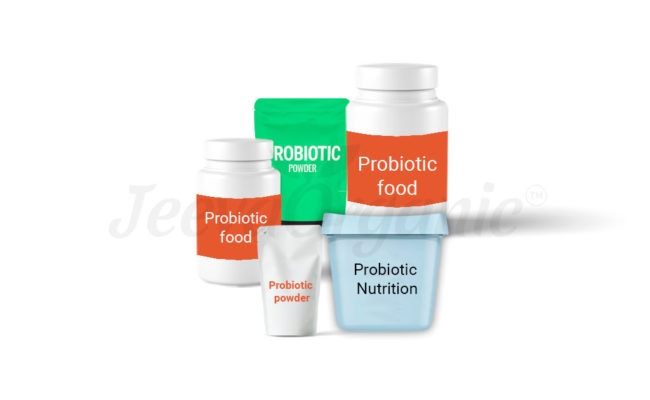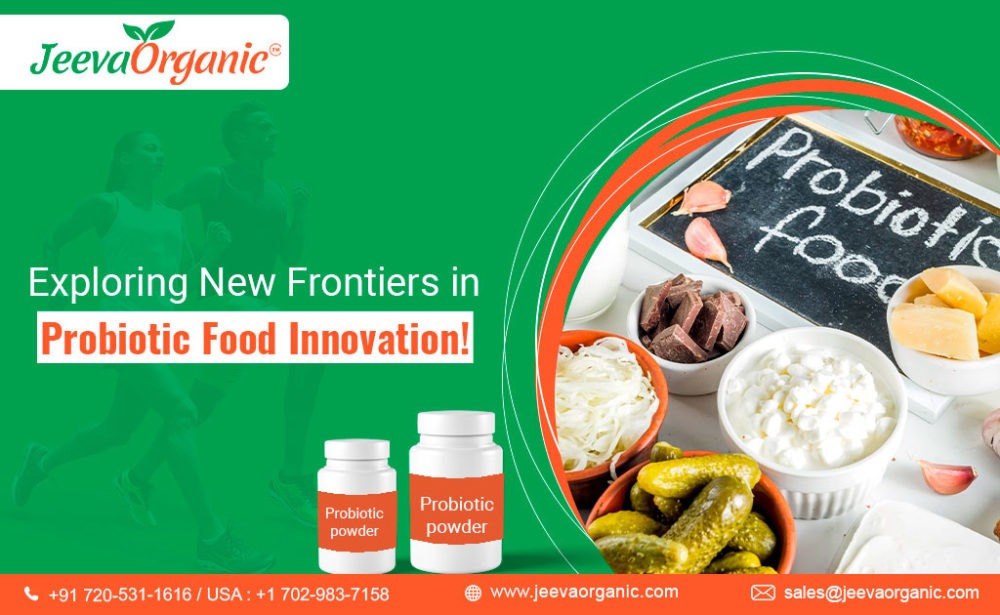The reign of yogurt as the sole probiotic king is over. While it remains a beloved staple, a new era of probiotic innovation is emerging, boldly venturing beyond the familiar white tub. Today, we’re witnessing a thrilling expansion of probiotics foods, enriching diverse categories like bakery, plant-based products, and fermented beverages.
Innovation In Probiotic Infused Products
-
Bakery Blossoms: Imagine sourdough loaves brimming with gut-friendly cultures, elevating bread beyond mere carbs to a digestive powerhouse. Probiotic-infused flours and sourdough starters are transforming bread-making, offering consumers a healthier, more flavorful loaf while promoting gut health.
-
Plant-Based Powerhouse: The plant-based revolution isn’t just about protein alternatives anymore. Probiotics are joining the party, enriching vegan yogurts, cheeses, and meat substitutes with the benefits of good bacteria. This opens up a whole new avenue for health-conscious consumers seeking delicious plant-based options that nurture their gut microbiome.
-
Fermenting Beyond Borders: Fermented beverages like kombucha and kefir are already probiotic champions, but the potential is far from tapped. Probiotic sodas, sparkling waters, and even probiotic-infused coffee are brewing on the horizon, offering exciting alternatives to sugary sodas and sparking a healthy buzz.
-
The Science Behind the Spread: This isn’t just a trendy fad; it’s backed by science. Research has linked gut health to a multitude of benefits. Consumers are increasingly aware of this gut-brain connection, driving demand for probiotic-rich options beyond the dairy aisle.
Ingredients for Probiotics Foods Manufacturing:
Base Ingredients:
-
Prebiotics: These non-digestible fibers act as food for the probiotics, promoting their growth and activity. Common prebiotics include inulin, fructooligosaccharides (FOS), and resistant starch.
-
Food substrates: These provide the nutrients and environment for the probiotics to thrive. Depending on the product, this could include milk, soy milk, almond milk, coconut water, fermented grains, fruits, vegetables, or even meat broths.
-
Thickening agents: These helps achieve the desired texture and consistency, especially in yogurt-like products. Examples include xanthan gum, guar gum, locust bean gum, and agar-agar.
Probiotic Strains:
-
Lactobacillus strains: These are the most common probiotics, known for their ability to produce lactic acid, which aids digestion and inhibits harmful bacteria. Popular strains include L. acidophilus, L. plantarum, and L. rhamnosus.
-
Bifidobacterium strains: These are another important group of probiotics. Common strains include B. bifidum, B. longum, and B. lactis.
-
Other probiotic strains: Several other strains are used for specific purposes, such as Saccharomyces boulardii and Bacillus coagulans.

Additional Ingredients:
-
Sweeteners: The product and target audience will determine which sweetener we use, whether it be natural sugars (honey, maple syrup), fruit concentrates, or sugar alcohols.
-
Flavorings: Natural or artificial flavors can be added to enhance the taste and appeal of the product.
-
Vitamins and minerals: Some manufacturers may fortify their probiotic foods with additional vitamins and minerals for added nutritional value.
The Bottom Line
The probiotic landscape is exploding, and the possibilities are endless. By embracing this exciting evolution and venturing beyond the traditional yogurt bowl, probiotic foods companies can tap into a growing market, differentiate themselves, and contribute to a healthier future for consumers. So, ditch the spoon and embrace the revolution – the probiotic future is brimming with delicious and health-promoting possibilities, waiting to be explored.
**The Food and Drug Administration has not evaluated these statements. This product is not intended to diagnose, treat, cure, or prevent any disease.**

